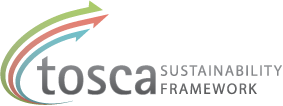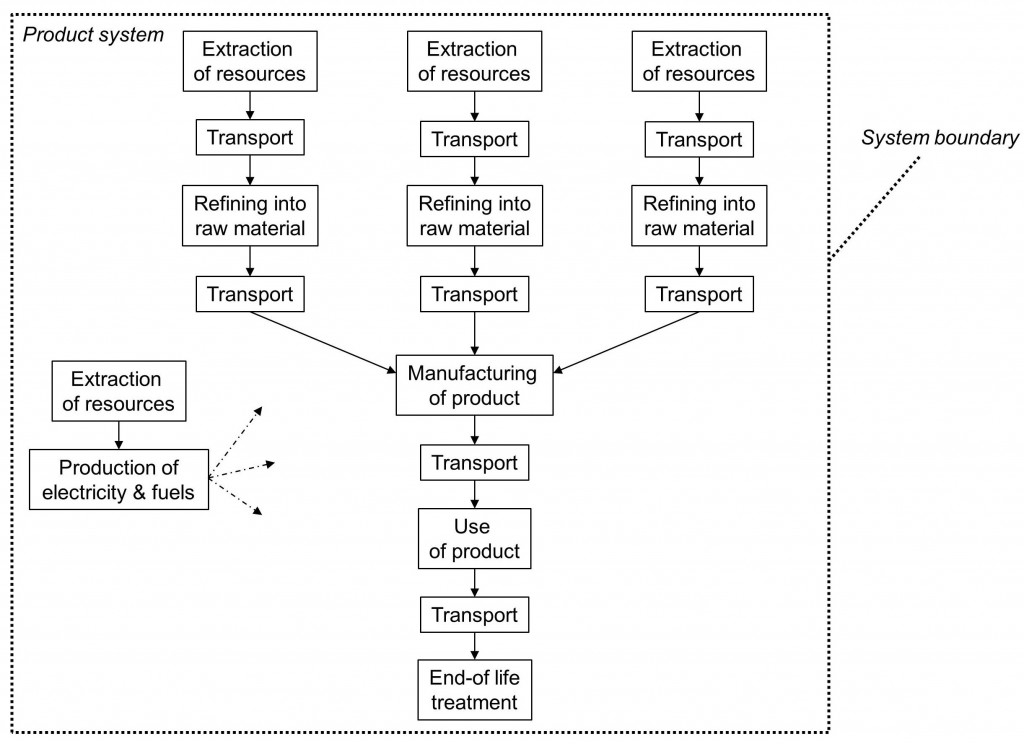Central concepts in LCA
Product system
The product system is a central concept in LCA. The product system models the life cycle of the product, and should include all processes that are needed to perform the defined function or functions in the LCA. In practice the product system consists of all included processes in the life cycle, i.e. the extraction, refining, manufacturing, use, transportation and waste management processes, and how they are connected to each other. The system boundary is defined by what has been included in the system.
To facilitate the understanding of the product system, it is usually described in a flow chart, where all processes and their interconnections are shown. In the figure below a simplified example is given of how a flow chart can look like.
Figure. Example of a product system
Unit process
The processes building up the product system are called unit processes. The unit process is the smallest part of the product system for which data has been collected, and can represent processes of very different scopes. For example a unit process can be:
- an individual process step or production line within a site,
- an entire production plant,
- a transport or transportation route, or
- it can be complex composite systems such as product systems for specific products from cradle to gate.
Data is collected for input and output flows for the unit process, e.g. inputs of energy and materials and outputs of products, emissions and waste.
Elementary flow
Elementary flows are input or output flows to a unit process or product system originating or ending up in the environmental system. Examples are natural resources extracted from the ground or an emission let out in water or air.



